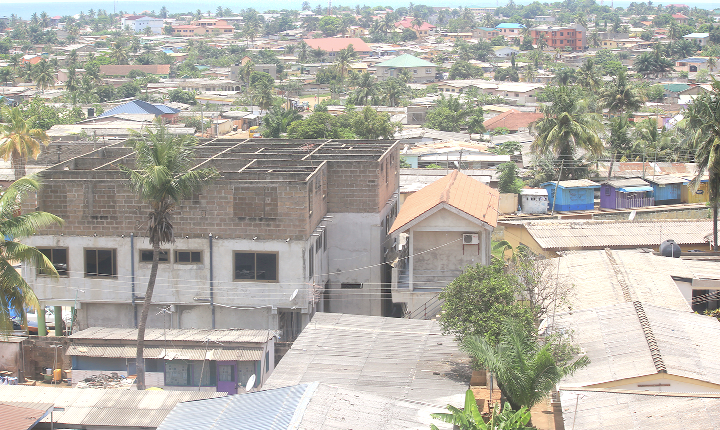
The need for a befitting capital city - 60 years after independence
In 1877, a few years after the British had assumed political control of Ghana, they changed the capital from Cape Coast to Accra. Accra was preferred because of its climatic conditions and the conduciveness of the population for taxation.
Advertisement
It is without doubt that Ghanaians did not play any substantial role in the decision to make Cape Coast the first capital city. An avid interest in the growth of cities has left me with endless questions about the effectiveness of Accra as the administrative capital of Ghana. If taxation and a geographical concern were the main basis for the change of the capital from Cape Coast to Accra, then I believe with all conviction that presently, there are countless compelling reasons and conditions that support the urgent need to relocate Ghana’s capital for the second time.
Planning
Looking at what is pertaining in Accra now, it seems that our planning schemes are at variance with the planning laws of Ghana. Over the years, planning schemes for Accra have rarely been successful due to the presence of unresponsive, unaccountable and corrupt government institutions.
The injection of rational order into the city of Accra is gradually becoming a herculean task. Its urban entanglement has overgrown, and our political leaders who play a key role in city development have become bridled by elections that they turn a blind eye to the planning and development of the city. The unfamiliarity of the National Building Regulations, LI 1630 by some professionals of the built environment is also an issue. For instance, permission is not sought from district, municipal and metropolitan assemblies before extensions are made to existing buildings (UN Habitat 2011). In recent years, increased sprawling has been accompanied with many ills that threaten Accra’s future. Presently, choked drains, indiscriminate waste disposal, open defecation, to name but a few, characterise the sanitation situation in Accra (UN Habitat 2009).
Ghana is in a desperate need of a new administrative capital city where density standards, use standards and dimensional standards are adhered to. Climate change has made building envelop standards, impervious surface percentage, building coverage and building setbacks very critical in the development of urban areas. Implementing these measures at this stage in Accra’s development, though possible, will be very daunting.
The colonial government’s neglect of urban planning in non-European districts and continuation of this trend by successive governments over the years has resulted in the heavy congestion and unhealthy conditions in many parts of Accra. The most worrisome has been development in flood-prone areas and in major drainage ways, in neighbourhoods such as Dzorwulu, Alajo and East Airport. Areas reserved for open space and future roads have also not been spared. At the heart of the issue is the contribution of wealthy and influential citizens who build without land titles and planning permission.
Measures
If emergency measures cannot be put in place to tackle the planning defects of Accra, then a new and neutral location of the capital city of Ghana will help resolve the issue of inadequate parks and recreational areas, as well as an opportunity for compact, walkable neighbourhoods with interconnected streets served by public transit systems to be realised.
More importantly, it will be an opportunity for vertical growth and visual order of future development since Accra is sprawling beyond control. The Brong Ahafo Region is felicitous for this purpose. The Brong Ahafo Region presents favourable opportunities for a planned city. It presents a unique opportunity to develop and enforce planning laws and make use of urban design standards that befit a country that is touted as the gateway to West Africa. It will also be an opportunity for Ghana to build a resilient capital which deals with the threats of climate change. Such a capital will ensure that the needs of cyclists and pedestrians are realised and public transport is given the necessary attention. Additionally, urban parks and recreational areas will get the needed presence, while mixed-use and mixed-income housing where the needs of “persons with disabilities” and the urban poor will be met. It has the benefit of sparking development in the neighbouring regions, which will in turn go a long way to strengthen the economic stability in the northern sector of the country.
A new capital will pave the way for local professionals of the built environment; engineers, architects, city planners and landscape architects, to build a capital city where buildings are designed in context and neighbourhoods rely less on automobiles for mobility. Reducing auto dependence will contribute to having cleaner air, less energy consumption and fewer greenhouse gas emissions, thus helping to address climate change.




